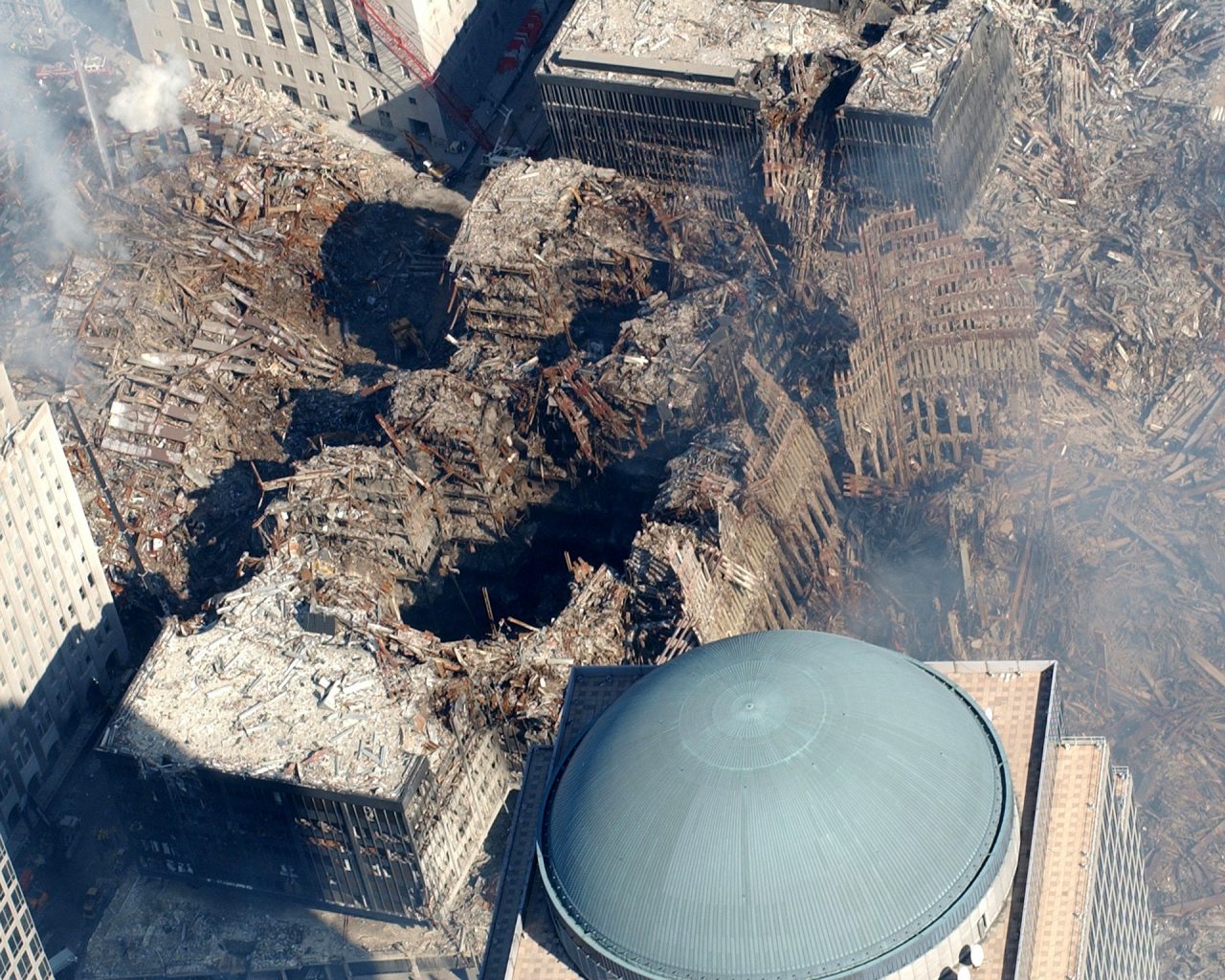Terrorism is a never-ending phenomenon with its roots going back to the beginning of humanity on earth and will most likely continue until the end of it. Although the patterns and the spikes vary, it is sufficing to say that there has never been a period without terrorist activities throughout the history of humanity.
David Rapoport (2002), explains this variance of modern terrorism with his “four waves” concept. Rapoport (2002, 47) identifies the first wave as the “Anarchist Wave”, because the main aim of the terrorists was to assassinate the prominent figures of their time. It was the first example of international terrorism, which began in the 1880s in Russia and spread out to Europe, the Balkans, and Asia within a decade. The second wave, “the Anti-Colonial Wave”, started in the 1920s and ended in 1960s. It was followed by “the New Left Wave”, which disappeared towards the end of the twentieth century. Rapoport defines the fourth wave as “Religious Wave”, which started with the Iranian Revolution and continues today.
According to Rapoport each wave approximately last around 40 years; this means that the “Religious Wave” is close to concluding with the start of a new, unknown wave following. According to Jeffrey Kaplan (2008) the fifth wave will be which grows from the movements that are emerging from the first four waves. Kaplan states that some “cut ties to their international benefactors or ideological/religious bedfellows and sought to realize a utopian vision of a radically perfected society… the reconstitution of a lost “Golden Age” model or an entirely new world in a single generation”. He states in his article that groups in this fifth wave have the similar characteristics such as radicalization, extremism, and violence. Today’s terrorist groups, such as the Islamic State and Levant (ISIL) and Boko Haram have these same characteristics. Data released by the Global Terror Index (GTI) are unfolding the dimensions of the fierce violence caused by this new wave. According to GTI, “terrorist activity increased by 80% in 2014” (2015, 4). GTI further finds that while 72% of the terrorist activities took place in five countries-Iraq, Afghanistan, Nigeria, Pakistan and Syria; 74% of these activities were carried out by four terrorist organizations- ISIL, Boko Haram, the Taliban and al-Qaida.

Photo by Pixabay
This data arises some questions, some of which are: what are the key reasons for this resurgence? What makes the fifth wave different from the previous cases? What are the new dimensions added to the equation? The aim of this paper is to analyze the key reasons for the resurgence of international terrorist organizations in the 21st century.
Key Reasons for the Resurgence
Although there are several reasons that resurgence of terrorism occurs, Barnes (2017) narrows the field into five main causes, including: “Ethnicity, nationalism and separatism, poverty and economic disadvantage, democracy (or lack thereof), disaffected intelligentsia, and religion”. Each alone, or a combination of overlapping factors, can drive people to resort to terrorism. However, the situation in the 21st century has become more complicated due to new inputs, such as the rise in the number of failed or fragile states and the widespread use of social media, which has facilitated the resurgence. Although it is difficult to find a direct correlation between failed/fragile states and terrorism, recent statistical data on terrorism indicate that most of the terrorist organizations as mentioned above, flourished or tend to flourish in areas where failed or fragile states are located. Furthermore, widespread use of internet communication through social media, albeit not a direct reason for the resurge, has become the most powerful tool for the spread of terrorism all around the world. Finally, the interventions by Western militaries to replace dictatorships with democratic regimes and ill-timed withdrawals, or the West’s reluctance to intervene in new cases, caused more chaos and bloodshed. In the following paragraphs, I will analyze these reasons in detail within the context of resurgence of terrorism throughout the last decade.
Ethnicity, Nationalism and Separatism
Ethnicity, nationalism and separatism were the main drivers of the anti-colonial wave, and however, we have still been witnessing the examples of nationalist and separatist movements (Rapoport, 2002). The most prominent example is the ongoing Ukraine crisis and the annexation of Crimea by Russia. The Ukraine crisis started as a nationalist separatist movement of the Russian speaking minorities living in the eastern regions of Donetsk and Luhansk. Crowds who initially rallied for regional autonomy and language rights, later turned into well-organized armed movements which took over government buildings and towns, then finally proclaiming independence (Trenin, 2014, 7). With the start of antiterrorism operations by the Ukrainian forces, the situation evolved into a high intensity conflict which resulted in thousands of deaths and mass population movements (Trenin, 2014, 7).

Photo by Pixabay
Although the crisis was labeled as a terrorist movement by the Ukrainian authorities, it would be naïve to narrow it down to terrorism alone. Behind the scenes, the main reason which elevated this crisis was the long-lasting hegemonic rivalry between the West (U.S.-NATO) and Russia, which had re-emerged during the Georgia crisis in 2008. Russian support arrived to separatists under the disguise of being humanitarian truck convoys; although the West calls this “Hybrid Warfare”, it could also be speculated that this is the new version of state-sponsored terrorism (Motyl, 2014). Russia, having achieved its goals in Ukraine, used this crisis as a springboard to jump into the Middle East, which not only prolonged the ongoing Syrian crisis, but also fueled the radical terrorism in the region.
Another recent example of separatist terrorist organizations is the PKK in Turkey, which increased the number and intensity of its attacks, including indiscriminate suicide bombings which resulted in several losses. The PKK, largely benefited from the ongoing Syria and Iraq crises and strengthened during the so-called peace process with the Turkish government. Although the PKK is a regional terrorist organization, when considered in a broader perspective, it shares the same ambition of an independent Kurdish State with its sister organizations based in Iran and northern Syria (even though Turkey and its Western allies have different opinions on this issue). It can be argued that the PKK is part of broader, international terrorist movement which exacerbates the ongoing instability in the region.
Poverty and Economic Disadvantage, Lack of Democracy and Disaffected Intelligentsia
Boko Haram. Poverty and economic disadvantage were among the most important causes that led to the emergence of one of the deadliest terrorist organizations of this century. Boko Haram drew the attention of the international community when they kidnapped more than 200 girls in 2014. The Twitter campaign, “#BringBackOurDaughters” attracted millions which put pressure on the government of Nigeria to take necessary measures against Boko Haram. Despite the efforts taken by the Goodluck Jonathan government and the African Union forces, Boko Haram continued its attacks not only in the country but also extended its area of influence to neighboring countries such as Chad, Niger, and Cameroon while also targeting regional trade routes (Blanchard & Blanchard, 2015). According to GTI data, Boko Haram, which killed more than 5000 people in one year, was the second deadliest terrorist organization in 2015. Asuelime and David (2015, 6) argue in their book that “the high level of socio-economic inequality in Nigeria can meaningfully explain the emergence and persistence of the Boko Haram terrorism in the country.” Asuelime and David also highlight that the root causes should not be narrowed down to single elements such as economics, politics or religion and should be discussed in a broader context including poverty, unemployment, inequality, demography and development issues. Barna (2014, 5) in her paper states that Boko Haram, once a peaceful religious movement, following the reformist Islamic tradition, evolved into a radical terror group due to dissatisfaction with poor socio-economic conditions and widespread corruption in the Nigerian state.
Boko Haram, also named as Nigerian Taliban, originated as a regional movement in the first years of the 21st century with the aim of establishing a separate state with Muslim values in northern Nigeria. The name, Boko Haram, literally means ‘Western education is forbidden’ or ‘Western education is sinful’, in the Hausa language. As it is understood from its name, Boko Haram emerged as a movement praising Muslim civilization and rejecting western civilization and its education system (Asuelime and David, 2015, 65-68). However, after the death of its founder, Mohammed Yusuf in 2009, the movement turned into a radicalized extremist terrorist organization under the leadership of Abubaker Shekau (Barna, 2014, 7). Although it seems regional, a statement from 2009 and released in 2013 demonstrates the international ambitions of the group; in it, the group declares its support to Osama bin Laden and states that it will carry out its operations until reaching their aim of an Islamic Nigeria (Asuelime and David, 2015, 77). The group also pledged loyalty to ISIL in 2015 and display a similar approach and actions to reach its end-state. This case leads back to the rise of Boko Haram, is an example of poor socio-economic conditions being disregarded by corrupt or unable states. This causes even peaceful movement to evolve into brutal terrorist organization.
Arab Spring and Effects of Failed/Fragile States to the Resurgence of International Terrorism. However, poor socio-economic conditions and widespread corruption were not the problems of just Nigeria but over the territory of all Africa, especially the Arab countries in the north of the continent and along the Arabian Peninsula. In 2011, a video released on social media sparked mass protests, which suddenly spread into the whole Arab world. “… [S]ocial protests that swept through the Arab world …, toppling some long-standing regimes and seriously destabilizing others, was the consequence of decades of oppressive and authoritarian political systems, failed economic policies, and socially alienated and disaffected populations, mainly youths.” (Aissa, 2012, 2). Dictatorships in Tunisia, Egypt and Libya were overthrown, while many others were shaken by the angry crowds. Peaceful protests in countries such as Syria and Yemen, where the ruling regimes couldn’t manage the process efficiently, evolved into armed conflicts which continue to date. Many of the states in the Middle East and North Africa (MENA) region which could not fully control the terror within their territory which poses danger to the security of neighboring countries (Liang, 2016, 85). These collapsed or weakened regimes created a huge power vacuum in the region, which ignited a power struggle between regional powers. Specifically, the struggle between Iran and Saudi Arabia to export their ideologies and extend their influence, flared up the hatred and the conflicts in the region.
Furthermore, terrorist organizations realizing the vulnerabilities of failed or fragile states started making plans to reap the benefits of the revolutions. They were doubtless “that if they play their cards well, the revolutions, unrest, and turmoil of the Arab Spring could ultimately turn very much in their favor” (Byman, 2012, 76). According to GTI, 84% of the terrorist attacks and 95% of terrorism-originated deaths occur in the Middle East and North Africa, sub-Saharan Africa and South Asia (Afghanistan, Pakistan and India). MENA region accounts for 44% of all killings in 2015.
It is difficult to show a direct correlation between resurgence of terrorism and the fragile or failed states. However, these states usually offer the appropriate environment for the terrorist organizations to thrive (Barnes, 2017). Herein, it is needless to say that terrorist organizations, no matter how powerful they are, need the help of transnational crime groups. “Historically an area known for smuggling and trafficking, recent civil conflicts and unrest in the Sahel and Maghreb have created the perfect storm for criminal operations to flourish” (Liang, 2016, 84). This relationship with criminal groups provides terror organizations necessary links to reach the financial necessities required in order to carry out their activities. For example, when the Qaddafi regime was overthrown in 2011, Libya became a safe haven for both terrorist and crime groups, due to persistent fighting between rival groups in the country. According to UN estimates, hundreds of thousands of arms from the Libyan arsenal captured by crime groups were subsequently sold to or fell into the hands of terrorist groups (Chivvis and Martini, 2014, 8).
Because Libya’s land and sea borders were so long and beyond total control, Libya offers the most suitable transit route for migrants and refugee traffickers. Libya became the main route for refugees, especially after measures taken by NATO to curb migration in the Aegean Sea. It is a well-known fact tactic that terrorist organizations in the region have been attacking refugee camps intentionally to force people to flee and benefit from the taxation of refugee flows which is a new way for “feeding the terror mill” (Liang, 2016, 85). Liang (2016) also states that “the economic importance of smuggling routes through Libya has led to fears that the country may become a new staging ground for ISIL.”
Religion and Radicalization
As Hoffman mentions in his book “Inside Terrorism”, the relationship between religion and terrorism is nothing new, which has thousands of years of history. He states that although terrorist organizations of previous centuries had some religious motives, they were mainly motivated by nationalist feelings. “For others like al Qaeda, however, the religious motive is overriding; and indeed, the religious imperative for terrorism is the most important defining characteristic of terrorist activity today” (Hofmann, 2006, 82-83). At this point, it is important to mention that the term, “holy terror”, attracts radicals from all religious beliefs.

Photo by Pixabay
Unfortunately, the biggest problem today, is labeling Islam as the sole motivation behind radical terrorism. As Maggiolini (2016, 81) mentions, this kind of generalizations, which we should avoid, will cause further marginalization and isolation in entire communities. Although they do not represent the whole Muslim community, four terrorist organizations which carry out their attacks under the pretext of serving Islam; ISIL, Boko Haram, the Taliban, and al-Qaeda, were responsible for 74% of all deaths from terrorism. Further, 72% of all deaths from terrorism is concentrated in the countries of Iraq, Nigeria, Afghanistan, Pakistan, and Syria (GTI, 2016, 3). Interestingly, although these specific groups believe themselves to be the defendants of Islam, all of these countries have a predominant Muslim majority, or in the case of Nigeria, a 50% Muslim population, within the country. This means terrorism under the pretext of Islam is largely targeting other Muslims. Then the question arises, why is the West worried about these terrorist organisations? The basic answer is because of globalisation and the widespread use of internet and social media as a propaganda machine.
In fact, after the 9/11 attacks in the U.S. and the following bombings in some European cities, the “Global War on Terror-GWOT” was successful to some extent as Western Societies tended to turn a blind eye to the imminent threat emanating from Africa and the Middle East. The belief was that danger was thousands of miles away and violence, terror, and death were nothing more than TV news that appeared for just a couple of minutes.
Globalization and the widespread use of internet and social media. Towards the end of the 20th century, we started to realize the effects of globalisation in every aspect of our daily life, including our fight against terrorism became global. While our militaries were looking for al Qaeda terrorist, they were also looking for ways to hit their enemies at their homes; the Internet was the key to achieving their goals.
The use of the Internet by terrorist organizations is nothing new, however, the emergence of social media has largely changed the traditional means of communication. Widespread use of social media among the young population provided opportunities to terrorist organizations, especially to al-Qaeda, to use social media for propaganda and recruitment. In his article, Weimann explains why terrorist organizations are very much interested in social media. He mentions that, social media channels “are popular with their intended audience, …are user-friendly, reliable, and free…, social networking allows terrorists to reach out to their target audiences and virtually “knock on their doors”—in contrast to older models of websites” (Weimann, 2014, 3). Anwar al-Awlaki, who was allegedly a member of the senior leadership cadre of al Qaeda and named as “the bin Laden of the Internet”, was among the most effective users of social media in reaching individuals from across the globe (Post, McGinnis, and Moody, 2014, 315). In his messages, he mainly blamed the West as the common enemy and focused on themes that the West was responsible for the socio-economic problems of Muslims, and therefore, jihad was the only way to defend Islam (Post, McGinnis, and Moody, 2014, 315).
Although several terrorist organizations have been using social media, ISIL became the most effective user of it in the recent years. With its twitter accounts and online magazine (formerly, Dabiq, now renamed Rumiyah), ISIL has successfully attracted thousands of supporters to the battle field in the Middle East. Additionally, ISIL used social media to encouraging individuals, who were not able to integrate into their communities. ISIL managed to conduct major attacks across the world and has spread the fear of terrorism into the lives of Western societies. It has bred a new type of recruit, whether it be the “lone wolf, sleeping cells or returning fighters”, social media has helped ISIL in terms of upgrading its terrorism from local to international level.
Sectarian Strife and the Power Struggle in the Region. The Syrian conflict, which was ignited by the Assad regime’s brutal tactics to suppress the unhappy crowds, evolved into a sectarian fight between Sunnis and Shias in the broader context. A power vacuum in Syria provided the opportunity for several terrorist organizations to flourish and strengthen in Syrian, such as al Nusra Front, Ahrar-al Sham, and ISIL. When ISIL captured Mosul and declared its caliphate in 2014, conflict spread into Iraq, widening its area of influence. Ong (2014) argues that although the Sunni-Shia strife has exacerbated the ISIL threat, the timing of the U.S. withdrawal from Iraq and the security vacuum it created was another important factor to the resurgence of the group. Furthermore, the conflict became an international one with the participation of regional players such as Iran, Hezbollah, Saudi Arabia, and Turkey; Western Allies and Russia.
In the ongoing battles with terrorist organizations in the Middle East, different opinions, interests and ideologies prolonged the conflict. Further, difficulties in defining what and who is a terrorist pave the way for the terrorist organizations, especially al Qaeda and ISIL, to gain more power and spread to new territory by making alliances with regional terrorist groups; as is the example in the Sinai, North Africa, Afghanistan, India and Far East Asia.
Conclusion
Although time passes, the basic needs and ambitions of mankind never change. The fight between good and evil will continue to the end of time. This new wave of terrorism will likely last longer than previous waves due to its global spread but it will absolutely end soon. However, a new wave will most likely start soon after with new reasons, causes, names, methods and perhaps, in different territory. The rise of nationalism and the nationalist parties in Europe and the US might be the indications of a new emerging wave. A US Civil War Soldier and Writer, Ambrose Bierce, once mentioned that “Peace is a period of cheating between two periods of fighting”. However, this is not valid for terrorism as it is a never-ending phenomenon without any pause between either peace or fighting.
References:
Aissa, El H., (2012). “The Arab Spring: Causes, Consequences, and Implications”, USAWC Strategy Research Project.
Asuelime, L., E., and David, O., J., (2015). “Boko Haram: The Socio-Economic Drivers”, Springer Briefs in Political Science, Springer International Publishing AG Switzerland.
Barna, J., (2014). “Insecurity in context: The rise of Boko Haram in Nigeria”, Policy Department of European Union, Directorate-General for External Policies.
Barnes, B. (2017). “International Terrorism Course, Lecture slides”, University of Oklahoma.
Blanchard, L., P., & Blanchard, C., M., (2015). “Nigeria’s Boko Haram and the Islamic State”, CRS Insights. https://fas.org/sgp/crs/row/IN10242.pdf
Byman, D., L., (2011). “Al-Qaeda and the Arab Spring”, The Arab Awakening America and the Transformation of the Middle East, The Brookings Institution, Washington, DC.
Chivvis, C., S., & Martini, J., (2014). “Libya After Qaddafi: Lessons and Implications for the Future”, The RAND Corporation.
Global Terrorism Index (GTI) 2016, Measuring and Understanding the Impact of Terrorism, The Institute for Economics and Peace (IEP).
Global Terrorism Index (GTI) 2015, Measuring and Understanding the Impact of Terrorism, The Institute for Economics and Peace (IEP).
Hoffmann, B., (2006). “Inside Terrorism”, Colombia University Press, New York.
Kaplan, J., 2008. “Terrorism’s Fifth Wave: A Theory, a Conundrum and a Dilemma”, Perspectives on Terrorism, Volume 2, No 2.
http://www.terrorismanalysts.com/pt/index.php/pot/article/view/26/html
Liang, C., S., (2016). “Mapping the New Global Criminal-Terrorist Networks”, Global Terror Index 2016, p. 84-88.
Maggiolini, P., (2016). “Jihadist Hotbeds and Local Radicalisation Processes”, Global Terror Index 2016, p. 81-83.
Motyl, A., J., (2014). “Putin’s Russia as a State Sponsor of Terrorism”, World Affairs. http://www.worldaffairsjournal.org/blog/alexander-j-motyl/putin%E2%80%99s-russia-state-sponsor-terrorism?utm_source=World+Affairs+Newsletter&utm_campaign=0a9f25b377-April_14_2014_WNN&utm_medium=email&utm_term=0_f83b38c5c7-0a9f25b377-294555953
Org, K., (2014). “ISIS Resurgence and the Sunni-Shi’a Schism”, Small War Journal.
Post, J., M., McGinnis, C., and Moody, K., (2014). “The Changing Face of Terrorism in the 21st Century: The Communications Revolution and the Virtual Community of Hatred”, Behavioral Sciences and the Law 32: 306–334.
Rapoport, D., C., 2002. “The Four Waves of Rebel Terror and September 11”, Anthropoetics – The Journal of Generative Anthropology Volume VIII, number 1 (Spring/Summer 2002).
Trenin, D., (2014). “The Ukraine Crisis and the Resumption of Great-Power Rivalry”, Carnegie Moscow Center, July 2014.
Weimann G., (2014). “New Terrorism and New Media”, Commons Lab of the Woodrow Wilson International Center for Scholars, research series vol. 2.

